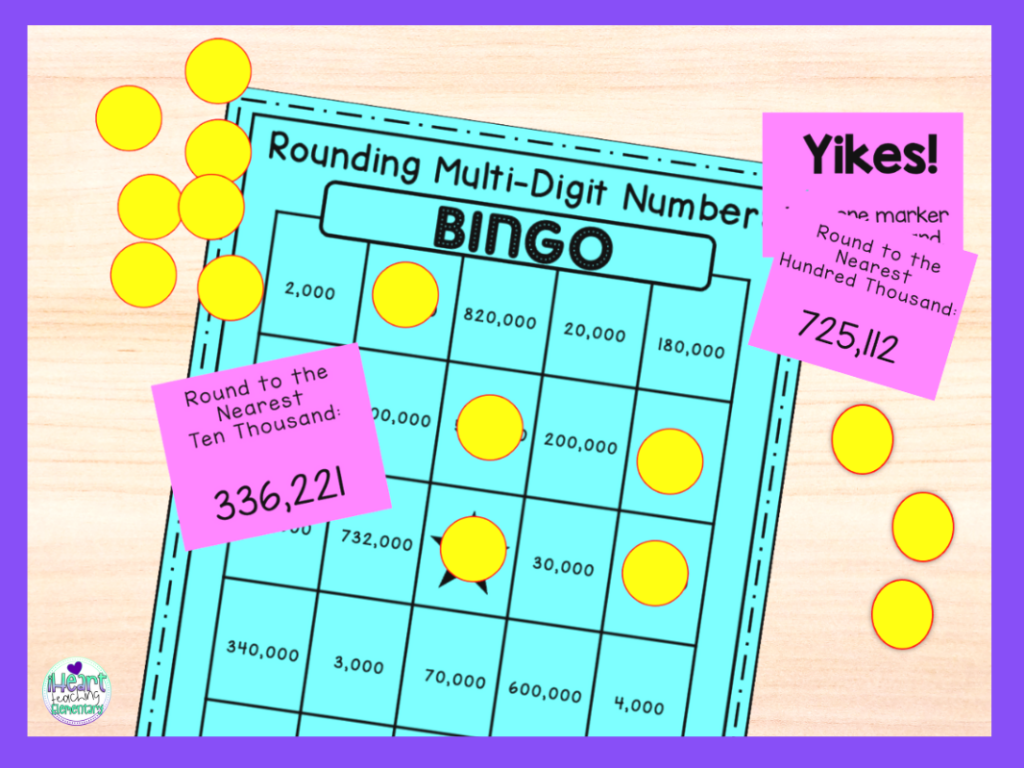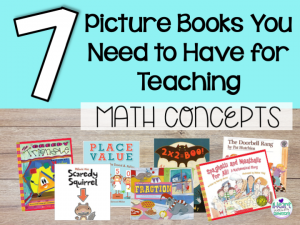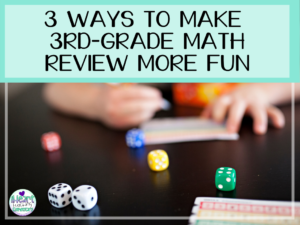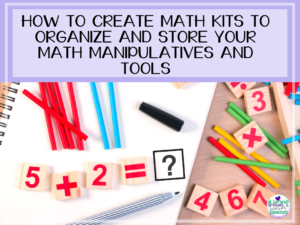I know that sometimes teaching from a district-mandated curriculum can be challenging and boring. But it is possible to have an engaging math block even with restrictions.
Here are some ideas for how to do that and I’m also going to share ways you can supplement the curriculum because there isn’t one boxed curriculum that fits every teacher and classroom.
Use Movement During Math
If your math curriculum uses books as the main instructional tool, you can use movement during the lesson to help kids stay engaged.
For example, when you’re doing a guided problem with the entire class, tell them to stand up when they’ve figured out the answer or the next step in the problem.
They can sit after answering the problem that follows. They stand and sit as you go through problems as a class.
This will help those kids that need a lot of movement to not zone out during the book lesson.

Students Agree or Disagree Using Hand Gestures
Another way to include movement in your math instruction is to have kids show with their hands if they agree or disagree with another student’s solution.
I learned this strategy from a co-worker and it works wonderfully with my students.
If they agree with a student’s solution, they wave one hand with their thumb and pinkie out, back and forth. If they disagree they wave both hands in an in-and-out motion.
You can really do any kind of hand gestures to show agreement and disagreement. But this gets all the kids involved at the same time without any yelling out.
It’s also a great way to assess how much of the class is understanding the math skill you’re teaching.
Use Math Book Problems As Task Cards
The next idea for using the book as your main instructional tool is to cut up the math problems in the workbook and place them around the room as task cards.
The kids can go around the room and solve the same math problems they’d be solving if they were seated at their desks.
If you have a student that isn’t able to go around the room to do the work, they can still complete the same problems in their own book.
This is another way to add movement to the lesson which is helpful for keeping kids engaged.

Supplementing a Math Curriculum
Now let’s talk about supplementing your required math curriculum. There isn’t a math curriculum out there that is perfect and works for every single student.
When you’re teaching the lessons in the curriculum, leave a day during each skill unit to play a game or do an activity that reinforces the math skill.
If you’re teaching fractions on a number line lesson, plan to use a game in place of the fractions lesson in the math book.
Or if you notice that one of the lessons in the math book is a little dry, plan an activity that reinforces that same math skill in place of the lesson.

If you can’t do games and activities with the whole class, play them when you meet with students in small groups or use them as a math center.
Using a district-mandated curriculum doesn’t mean not being able to teach engaging lessons. We just have to get creative in how we get kids to learn the material.
🛒 Shop This Post on the Website 🛒
Not Your Average Math Bingo Games
🛒 Shop This Post on TpT 🛒




I really like your idea about having a day to play games to enforce the learning concepts. I will give this a try in my class. Thanks for sharing your ideas.
LeShawn I’m so happy to hear that this was helpful. I love playing games to help kids stay engaged in their learning. Have fun with your students!